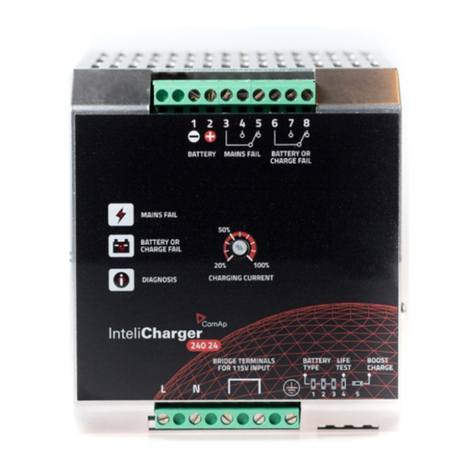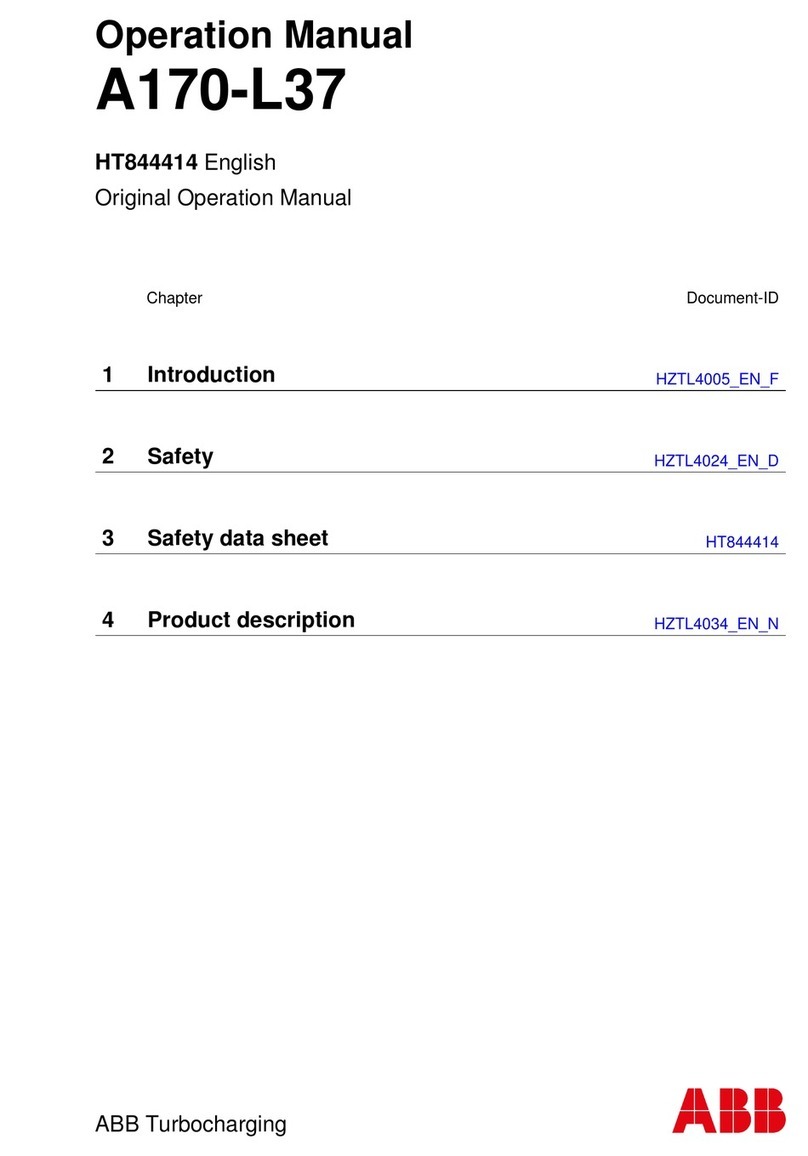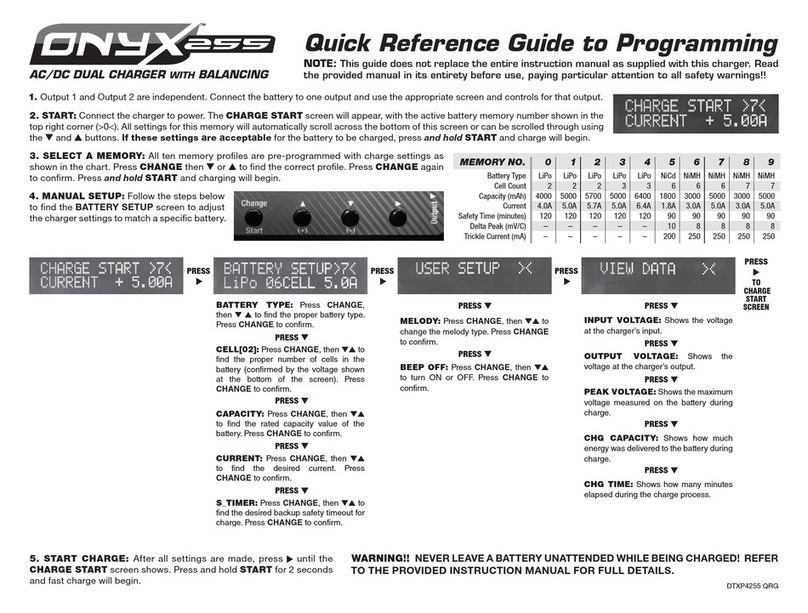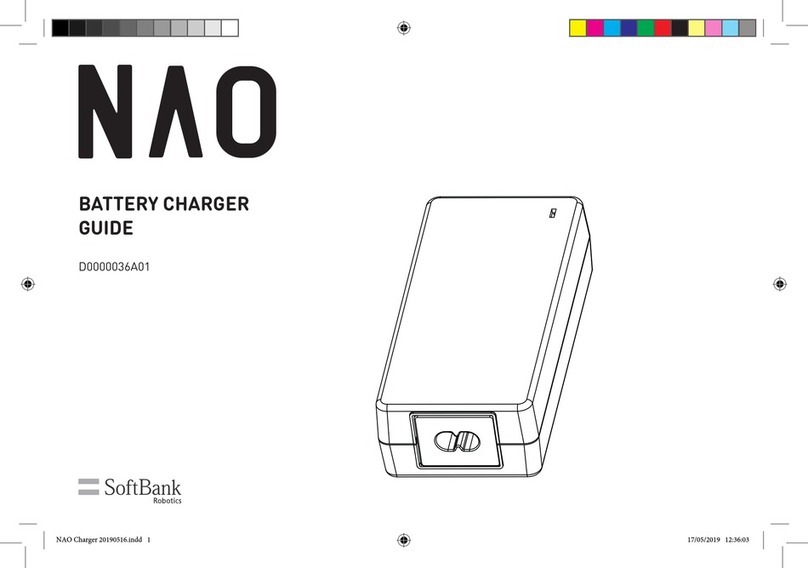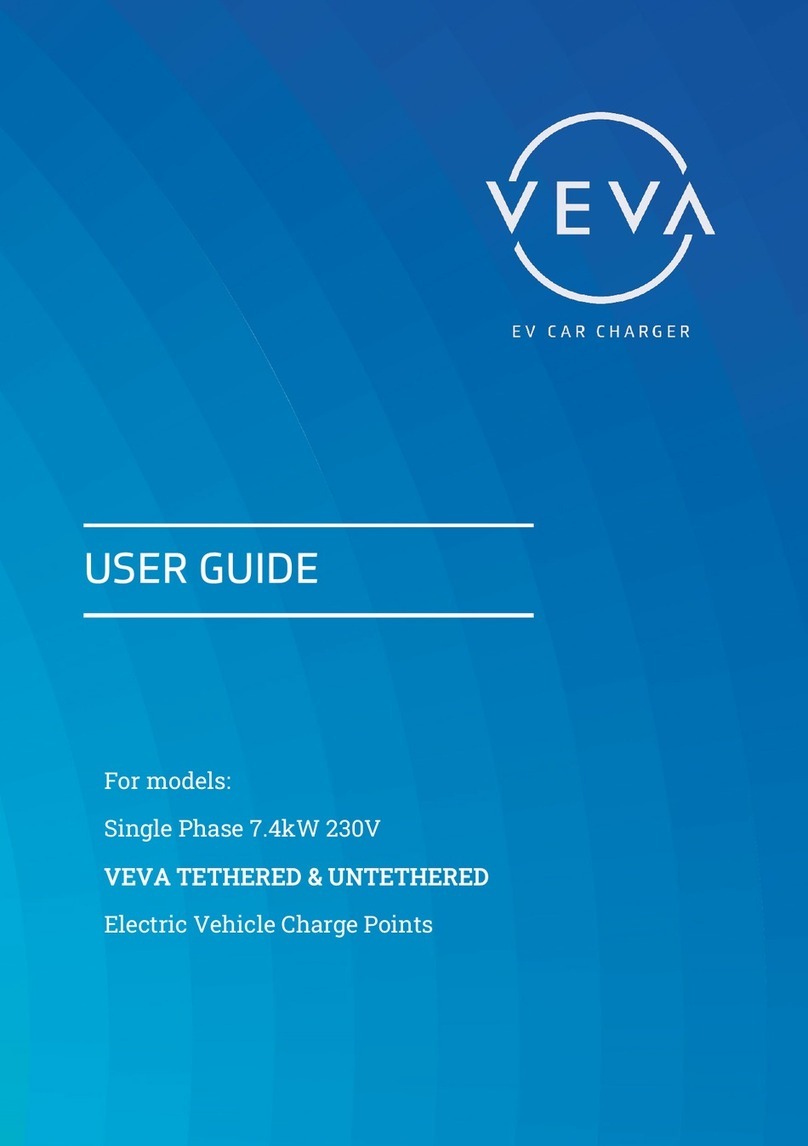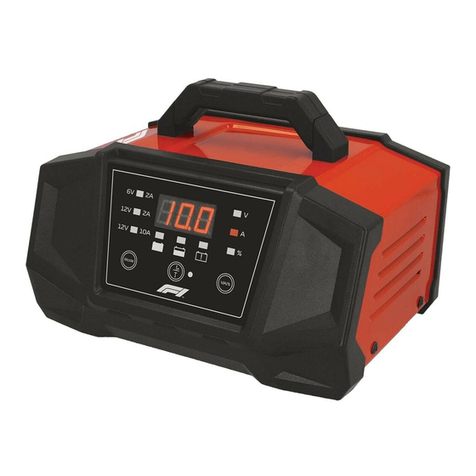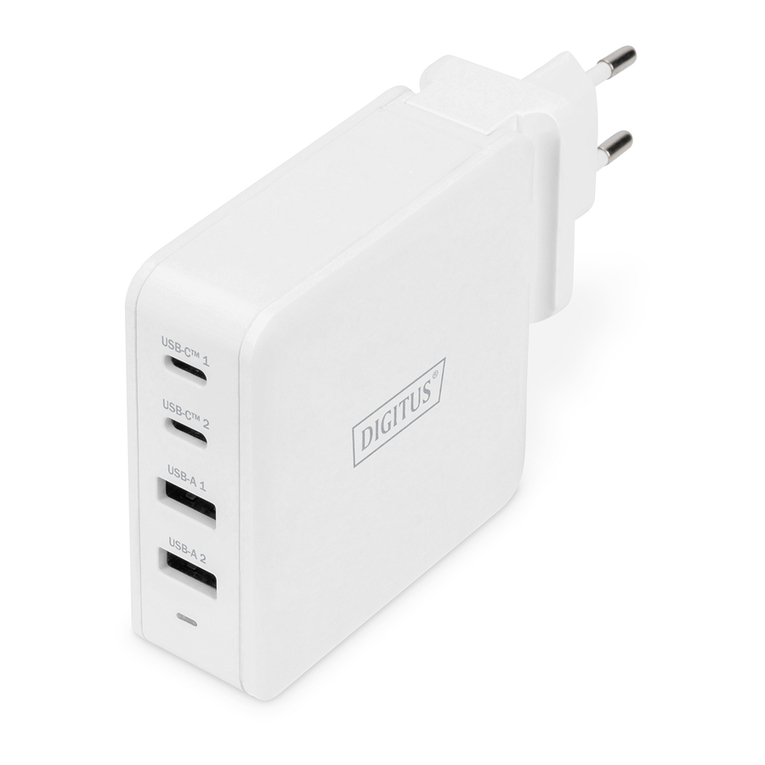Hartig+Helling BL 506 User manual

BL 506, Bed.-Anl. 06.12.2007 8:54 Uhr Seite 1
59HH1207
Bedienungsanleitung
Operating instructions
Mode d’emploi
Istruzioni per l’uso
Hartig
+
Helling GmbH
+
Co. KG
Wilhelm-Leithe-Weg 81
44867 Bochum, Germany
http://www.hartig-helling.de
Service-Hotline
(0,14 Euro pro Minute aus dem deutschen Fetsnetz.
Eventuell abweichender Mobilfunktarif.)
Telefon 01805 8855600
Telefax 01805 8855609
MMOBILOBIL
LLADEADEGERÄTGERÄT
BL 506

BL 506, Bed.-Anl. 06.12.2007 8:54 Uhr Seite 2
Mit diesem Gerät können Sie
Ihre NiCd- und NiMH-Akkus der
Größen Micro (AAA) und Mig-
non (AA) laden. Die Akkus kön-
nen paarweise (2 oder 4) gela-
den werden.
Neben den Funktionen Ent-
laden, Schnellladen und
Erhaltungsladen verfügt das
Ladegerät über eine Span-
nungsüberwachungs-Funktion
(∆U), wodurch eine Überladung
der Akkus nicht möglich ist.
BL 506 besteht aus dem Lade-
gerät, einem Netzteil und einem
Autoadapter für den Anschluss
an die Zigarettenan-
schlussbuchse Ihres Autos.
Bei den ersten Ladevorgängen
kann das Gerät durch Wärme-
entwicklung, die beim Laden
entsteht, etwas riechen. Dabei
handelt es sich nicht um einen
Gerätefehler, sondern um einen
völlig normalen Vorgang, der
sich nach einigen Ladungen ver-
flüchtigt.
Bitte beachten Sie, dass nur Ak-
kus mit gleicher Größe und glei-
cher Kapazität gleichzeitig ge-
laden werden können. Das
gleichzeitige Laden von Akkus
mit unterschiedlichen Kapazitä-
ten hätte zur Folge, dass die
Akkus mit der niedrigeren Ka-
pazität überladen würden.
Entladen und Laden
1. Verbinden Sie das BL 506 mit
dem Netzteil und dann mit dem
Stromnetz (230 V AC).
2. Die rechts befindliche LED leuch-
tet kurz gelb auf.
3. Wählen Sie aus, ob Sie zwei oder
vier Akkus laden möchten. Wenn
Sie zwei Akkus laden möchten,
muss der Schalter auf „2” gestellt
werden; wenn Sie vier Akkus
laden möchten, muss der Schal-
ter in Stellung „4” gebracht wer-
den.
4. Legen Sie Ihre Akkus in die dafür
vorgesehenen Lademulden
(CH1–CH 4). Die LED leuchtet
rot auf.
5. Sollen die Akkus vor dem Aufla-
den entladen werden, dann
drücken Sie nun auf den Entla-
deknopf, um den Entladevorgang
zu starten. Der Entladevorgang
wird Ihnen dadurch angezeigt,
dass die LED gelb aufleuchtet.
Nachdem der Entladevorgang
beendet ist, schaltet das Lade-
gerät automatisch auf Schnell-
laden um. Das wird Ihnen durch
die rot aufleuchtende LED ange-
3

BL 506, Bed.-Anl. 06.12.2007 8:54 Uhr Seite 3
Sicherheitshinweise
Achtung: Versuchen Sie niemals,
alkalische Batterien oder RAM-
Zellen (wiederaufladbare Batte-
rien) zu laden.
Es besteht Explosionsgefahr!
Ladezeiten
Die Ladezeit für die Akkus ist ab-
hängig von der Nennkapazität.
Um die Ladezeit für Ihre Akkus zu
bestimmen, teilen Sie die Akkuka-
pazität durch den Ladestrom (siehe
„Technische Daten”) und multipli-
zieren diesen Wert mit 1,4.
Beispiel:
Aufladen von 1800-mAh-NiCd-
Mignonakkus
1800 mAh (Kapazität)
800 mA (Ladestrom)
= 3,15 Std. (189 min)
Die aufgeführte Ladezeit ist nur
eine ca.-Angabe. Diese Angabe
kann unter Umständen sehr starke
Abweichungen, abhängig z. B. vom
Alter der Akkus oder vom zu häufi-
gen Laden ohne vorherige Entla-
dung (siehe „Was heißt Memory-
Effekt?”) aufweisen.
Die Werte für die Ladezeiten bezie-
hen sich auf vollständig entladene
Akkus.
Verbraucherhinweis
Bitte beachten Sie, dass alle neuen
NiCd- und NiMH-Akkus erst nach
4-6 Ladevorgängen die volle Ka-
pazität erreichen.
Was heißt Memory-Effekt?
Werden NiCd-Akkus längere Zeit
wiederholt nur teilentladen und
danach sofort wieder voll aufgela-
den, so steht Ihnen nur noch diese
ständig bewegte Teilkapazität des
Akkus zur Verfügung. Ein Phäno-
men, das als sog. „Memory-Effekt”
bezeichnet wird. D. h., Ihr Akku
verfügt nicht mehr über die volle
Kapazität, und das nur deshalb,
weil er mehrmals nicht vollständig
entladen wurde. Nur noch die re-
lativ geringe Teilkapazität steht
Ihnen zur Verfügung. Im Extremfall
kann dies dazu führen, dass der
Akku überhaupt nicht mehr gela-
den werden kann.
54
zeigt.
6. Möchten Sie die Akkus vor dem
Laden nicht entladen, legen Sie
sie einfach in die vorgesehenen
Lademulden (CH1–CH 4). Das
Laden wird Ihnen durch die rot
aufleuchtende LED angezeigt.
7. Sobald Ihre Akkus aufgeladen
sind, schaltet das Ladegerät auf
Erhaltungsladung um. Die grün
aufleuchtende Lade-/Entlade-
LED signalisiert Ihnen die Erhal-
tungsladung.
„Refresh“-Funktion
Als Besonderheit verfügt das
BL 506 über eine Auffrischfunktion
Ihrer Akkus. Diese Funktion ermög-
licht es Ihnen, Akkus mit Kapazi-
tätsverlusten (siehe „Was heißt Me-
mory-Effekt?”) wieder zu
regenerieren, so dass sie sich wie-
der neu formieren können. Diese
Funktion sollten Sie vor allem bei
älteren oder auch länger nicht be-
nutzten Akkus anwenden.
Vor dem Wiederauffrischen verbin-
den Sie das BL 506 mit dem Strom-
netz (230V AC) oder der Zigaretten-
Anschlussbuchse Ihres Autos
(12 V DC).
1. Sobald das Ladegerät mit dem
Netz verbunden ist, leuchtet die
rechts befindliche LED kurz gelb
auf.
2. Stellen Sie nun den Schalter auf
Mittelstellung „REFRESH” (Auf-
frischfunktion).
3. Legen Sie nun Ihre Akkus in die
dafür vorgesehenen Lademulden
(CH1–CH 4), ohne dass der Ent-
ladeknopf gedrückt wird.
4. Sobald Ihre Akkus eingelegt
sind, leuchtet die LED gelb auf
und signalisiert Ihnen das Ent-
laden Ihrer Akkus. Mit dieser
Funktion werden Ihre Akkus
durch einen sehr niedrigen Ent-
ladestrom zur völligen Entladung
gebracht.
5. Nach Beendigung der Entladung
blinkt die gelbe LED.
6. Fahren Sie nun wie unter Punkt
„Laden und Entladen” beschrie-
ben fort.
Wichtig: Wenn Sie nach dem Wie-
derauffrischvorgang Ihrer Akkus
keine Verbesserung bezüglich der
Leistung feststellen, sind Ihre Akkus
schon soweit geschädigt, dass Sie
sie austauschen müssen.
x 1,4

BL 506, Bed.-Anl. 06.12.2007 8:54 Uhr Seite 4
7
Technische Daten
Netzteil Eingang:
230 V AC/50 Hz/19,8 W
Ausgang:
12 V DC/800 mA/9,6 VA
Ladegerät Eingang:
12 V DC –13,8 V DC
Ausgang:
2,8 V DC/5,6 V DC
Ladestrom:
300 mA Micro (AAA)
800 mA Mignon (AA)
Autoadapter Eingang:
12 V DC-13,8 V DC
Ausgang: 12 V DC-13,8 V DC
Aktuelle Produktinformationen finden
Sie auf unserer Internet-Seite
http://www.hartig-helling.de.
6
Wichtiger Hinweis
Versuchen Sie niemals, nach er-
folgter Aufladung Ihrer Akkus diese
ohne vorherige Entladung erneut
zu laden. Akkus und Ladegerät
könnten dadurch zerstört werden.
Nach dem Ladevorgang sind Ihre
Akkus optimal geladen. Weitere
Ladungen hätten zur Folge, dass
Ihren Akkus zuviel Energie zuge-
führt würde (Überladung).
Entsorgungshinweis
Altgeräte, die mit dem abgebildeten
Symbol gekennzeichnet sind,
dürfen nicht mit dem Hausmüll
entsorgt werden.
Verbrauchte Batterien und Akku-
mulatoren (Akkus), die mit einem
der abgebildeten Symbole gekenn-
zeichnet sind, dürfen nicht mit dem
Hausmüll entsorgt werden.
Sie müssen sie bei einer Sammel-
stelle für Altgeräte, Altbatterien
bzw. Sondermüll (informieren Sie
sich bitte bei Ihrer Gemeinde) oder
bei Ihrem Händler, bei dem Sie sie
gekauft haben, abgeben. Diese sor-
gen für eine umweltfreundliche
Entsorgung.
Pflege und Gewährleistung
Trennen Sie das Gerät vor dem
Reinigen gegebenenfalls von an-
deren Komponenten und verwen-
den Sie bitte keine aggressiven
Reiniger.
Das Gerät wurde einer sorgfältigen
Endkontrolle unterzogen. Sollten
Sie trotzdem Grund zu einer Be-
anstandung haben, senden Sie uns
das Gerät mit der Kaufquittung ein.
Wir bieten eine Gewährleistung
von 2 Jahren ab Kaufdatum.
Für Schäden, die durch falsche
Handhabung, unsachgemäße Nut-
zung oder Verschleiß verursacht
wurden, übernehmen wir keine
Haftung.
Technische Änderungen sind vor-
behalten.

BL 506, Bed.-Anl. 06.12.2007 8:54 Uhr Seite 5
9
6. If you do not want to discharge
the accumulators prior to
charging, insert them into the
compartments provided for this
purpose (CH1-CH 4). Charging
is displayed by the red LED.
7. As soon as the accumulators
have been charged, the charger
changes over to floating. The
green charging/discharging LED
signals floating.
”Refresh” function
A special feature of the BL 506
charger is the refresh function for
round accumulators. This function
allows to regenerate accumulators
with capacity losses (refer to “What
is the memory effect?”) so that they
can form themselves again. This
function should be used, above all,
for older accumulators or those
which have not been in use for a
longer period of time.
Prior to refreshing, connect BL 506
with the mains
(230 V AC or the cigarette lighter
jack of your car/12 V DC).
1. As soon as the charger is
connected with the mains, the
yellow LED at the right will light
up for a short period of time.
2. Now set the switch to the
“REFRESH” central position.
3. Insert the accumulators onto the
compartment provided for this
purpose (CH1–CH 4), do not
press the discharging button.
4. As soon as the accumulators
have been inserted, the yellow
LED will light up and signal that
the accumulators are discharged.
This function will discharge your
accumulators completely by a
very low discharging current.
5. On completion of discharging,
the yellow LED flashes.
6. Now proceed as described in
section “Charging and
discharging”.
Important: If the capacity of your
accumulators is not increased after
refreshing, it is possible that your
accumulators are damaged and
have to be replaced.
Safety notes
Caution: Never try to charge
alkaline batteries or RAM cells
(re-chargeable batteries).
Danger of explosion!
8
It is suitable to charge AAA-
sized and AA-sized NiCd and
NiMH accumulators. The
accumulators can be charged in
pairs (2 or 4).
In addition to the discharging,
high-rate charging and trickle
charging functions, the charger
is also provided with a voltage
control monitoring function
(∆U) to prevent the accumu-
lators from over-charging.
BL 506 consists of the charger,
a mains adapter and the car
adapter for connection to the
cigarette lighter in your car.
During the initial charging
operations the charger may
smell due to heat development
when charging. This is not a
fault of the device but a quite
normal phenomenon which
disappears after a few charging
operations.
Please note to simultaneously
charge accumulators of the
same size and same capacity
only. Simultaneous charging of
accumulators of different
capacities would result in an
over-charge of the accumulators
with the lower capacity.
Discharging and charging
1. Connect BL 506 with the mains
adapter and then with the mains
(230 VAC).
2. The yellow LED at the right will
light up for a short period of
time.
3. Select two or four accumulators
for charging. If you want to
charge two accumulators, set
the switch to “2”, if you want to
charge four accumulators, put
the switch in the “4” position.
4. Now insert your accumulators in
the compartment provided for
this purpose (CH1–CH 4).
The red LED will light up.
5. If the accumulators are to be
discharged prior to charging,
press the discharging button to
start discharging. Discharging is
displayed by the yellow LED
which will light up. On
completion of discharging the
charger will change over to
high-rate charging automatically.
Charging is displayed by the red
LED which lights up.

BL 506, Bed.-Anl. 06.12.2007 8:54 Uhr Seite 6
11
marked with one of the symbols
illustrated may not be disposed of
in the household rubbish.
You must take them to a collection
point for old units, old batteries or
special waste (enquire at your local
authority) or the dealer from whom
you bought them. These agencies
will ensure environmentally
friendly disposal.
Care and warranty
Separate the device from other
components prior to cleaning, if
necessary, do not use aggressive
cleansing agents.
The device has been subjected to
a careful final inspection. In case
of complaints, however, please
return the device together with
the receipt. We grant a guarantee
period of 2 years from the date of
purchase.
No claims will be accepted for
damage due to wrong handling,
improper use or wear.
We reserve the right for technical
modifications.
Technical data
Mains adapter input:
230 V AC/50 Hz/19.8 W
Output :
12 V DC/800 mA/9.6 VA
Charger input:
12 V DC –13.8 V DC
Output:
2.8 V DC/5.6 V DC
Charging current:
300 mA (AAA-sized)
800 mA (AA-sized)
Car adapter input:
12 V DC-13,8 V DC
For current product information
please refer to our Internet Site
http://www.hartig-helling.de.
10
Charging times
The charging time for the
accumulators depends on the rated
capacity. To determine the charging
time for your accumulators please
divide the accumulator capacity by
the charging current (refer to
“Technical data”) and multiply this
value by 1.4.
Example:
Charging of 1800 mAh NiCd AA
accumulators
1800 mAh (capacity)
800 mA (charging current)
= 3.15 h (189 minutes)
The charging time given is an
approximate value only and may
differ considerably under certain
circumstances, e.g. depending on
the age of the accumulators or on
too frequent charging without prior
discharging (refer to “What is the
memory effect?”).
The charging time values are
applicable to completely
discharged accumulators.
Hints for consumers
Please note that all new NiCd and
NiMH accumulators will reach their
full capacity after 4–6 charging
processes only.
What is the memory effect?
If NiCd accumulators are only
partially discharged over a longer
period of time and then fully
charged immediately, only that
continuously changing partial
capacity is available. A
phenomenon, the so-called
“memory effect”, i. e., your
accumulator has not the full
capacity because it was not
discharged completely for several
times. Only the relatively low
partial capacity is available then.
In extreme cases this can mean
that it is impossible to charge the
accumulator.
Notes on Disposal
Old units, marked with the symbol
as illustrated, may not be disposed
of in the household rubbish.
Used rechargeable and non-
rechargeable batteries which are
x1.4

BL 506, Bed.-Anl. 06.12.2007 8:54 Uhr Seite 7
13
6. Si les piles ne doivent pas être
déchargées avant la charge,
placer les piles tout simplement
dans les compartiments à piles
prévus (CH1-CH 4). La charge
est indiquée par la DEL allumée
en rouge.
7. Dès que les piles sont chargées,
le chargeur commute sur charge
de maintien. La DEL de charge/
décharge allumée en vert
indique la charge de maintien.
Fonction «refresh»
Un point particulier du BL 506 est
sa fonction de «rafraîchissement»
pour piles rondes. Cette fonction
permet de régénérer les piles ayant
des pertes de capacité (voir «effet
mémoire») afin qu'elles puissent
de reformer. Utiliser cette fonction
surtout pour les piles anciennes ou
n'ayant plus été utilisées depuis
longtemps.
Avant toute «rafraîchissement»,
raccorder le BL 506 au réseau
électrique (230 V c.a.) ou à l'allume-
cigare de la voiture (12 V DC).
1. Dès que le chargeur est raccordé
au réseau, la DEL se trouvant à
droite s'allume en jaune un bref
instant.
2. Commuter l'interrupteur en
position centrale sur «REFRESH»
(rafraîchissement).
3. Placer les piles dans les
compartiments à piles prévus à
cet effet (CH1-CH 4) sans
appuyer sur le bouton de
décharge.
4. Dès que les piles sont placées,
la DEL s'allume en jaune et
signale la décharge des piles.
Cette fonction permet une
décharge totale par un courant
de décharge faible.
5. Une fois la décharge terminée,
la DEL jaune clignote.
6. Procéder maintenant comme
indiqué au point «Charge et
decharge».
Important: Si après une opération
de «rafraîchissement»des piles,
aucune amélioration de la
puissance n'est constatée, cela
signifie que les piles sont très usées
et qu'elles doivent être remplacées.
Consignes de sécurité
Attention: Ne jamais essayer de
charger des piles alcalines ou
des cellules RAM (piles
rechargeables).
Danger d'explosion!
12
Cet appareil permet de charger
les accus NiCd et MiMH LR03
(AAA) et LR6 (AA). Les accus
peuvent être chargés par paire
(2 ou 4).
Outre les fonctions décharge,
charge rapide et charge de
maintien, le chargeur dispose
d'une fonction de contrôle de
tension (∆U) rendant
impossible toute surcharge de
l'accu.
Le BL 506 se compose du
chargeur et d'un bloc de
raccordement et d'un adapteur.
Lors des premières opérations
de charge, l'appareil peut
dégager certaines odeurs lors
de la charge dû à la chaleur. Il
ne s'agit pas d'une défaillance
de l'appareil mais d'un
phénomène tout à fait normal
qui disparaît après quelques
charges.
Tenir compte du fait que seuls
des accus de même
dimensionnement et de même
capacité peuvent être rechargés
en même temps. La charge
parallèle d'accus de capacités
différentes aurait pour
conséquence que les accus
seraient en surcharge avec la
capacité la plus faible.
Decharge et charge
1. Raccorder le BL 506 au bloc de
raccordement au réseau et
ensuite au réseau électrique
(230 V c.a.).
2. La DEL se trouvant à droite
s'allume en jaune un bref instant.
3. Sélectionner si deux ou quatre
piles doivent être chargées. Pour
charger deux piles, placer
l'interrupteur sur «2», pour quatre
piles, cet interrupteur doit être
placé sur «4».
4. Placer les piles dans les
compartiments à piles prévus à
cet effet (CH1-CH 4). La DEL
passe au rouge.
5. Si les piles doivent être
déchargées avant la charge,
appuyer sur le bouton de
décharge afin de démarrer cette
opération. L'opération de
décharge est indiquée par la DEL
qui est allumée en jaune. Une
fois l'opération de décharge
terminée, le chargeur passe
automatiquement sur charge
rapide. La charge est indiquée
par la DEL qui est allumée en
rouge.

BL 506, Bed.-Anl. 06.12.2007 8:54 Uhr Seite 8
Durees de charge
La durée de charge des accus
dépend de la capacité nominale.
Pour pouvoir déterminer la durée
de charge des accus, diviser la
capacité indiquée par le courant
de charge (voir «Spécifications
techniques ») et multiplier cette
valeur par 1,4.
Exemple: Charge d'une pile LR6
NiCd 1800 mAh
1800 mAh (capacité)
800 mA (courant de charge)
= 3,15 heure (189 min.)
La durée de charge indiquée n'est
qu'une donnée approximative. Sous
certaines conditions, cette
indication peut varier très
fortement, p.ex. en fonction de
l'âge de la pile ou de la fréquence
des charges sans décharge
préalable (voir « Que signifie l'effet
de mémoire? »).
Les valeurs de durées de charge
se réfèrent à des piles entièrement
déchargées.
Information pour le
consommateur
Tenir compte du fait que toutes les
nouvelles piles NiCd et NiMH
n'atteignent leur pleine capacité
qu'après 4–6 opérations de charge.
Que signifie l’effet mémoire?
Si une pile NiCd n'est déchargée à
plusieurs reprises que partiellement
puis ensuite rechargée, la pile ne
dispose plus que de cette capacité
partielle constamment en
mouvement. Un phénomène que
l'on désigne par «effet mémoire».
La pile ne dispose donc plus de la
pleine capacité car elle n'a pas été
chargée complètement à plusieurs
reprises. Elle ne dispose plus que
de la capacité partielle relativement
faible et, dans un cas extrême, il
peut arriver qu'une pile ne puisse
plus être rechargée.
Consigne importante
Attention: après recharge des piles,
ne jamais essayer de les charger
une nouvelle fois sans décharge
préalable, les piles et le chargeur
pouvant se détériorer. Après la
charge, les piles sont chargées de
façon optimale. Des charges
supplémentaires auraient pour
conséquence que les piles
recevraient plus d'énergie qu'elles
peuvent absorber (surcharge).
Conseils pour l’élimination
Les vieux appareils marqués du
15
symbole représenté sur la figure
ne doivent pas être éliminés avec
les ordures ménagères.
Les piles et accumulateurs usés qui
sont marqués de l’un des symboles
représentés ne doivent pas être
éliminés avec les ordures
ménagères.
Vous devez les apporter à un point
de collecte pour vieux appareils,
piles usées ou déchets spéciaux
(renseignez-vous auprès de votre
mairie) ou les rapporter chez le
commerçant où vous les avez
achetés. De cette manière, ils
seront éliminés en respectant
l’environnement.
Entretien et garantie
Avant le nettoyage, coupez si
nécessaire l’appareil d'autres
composants et n'utilisez pas de
produits de nettoyage agressifs.
L’appareil a été soumis à un
contrôle final minutieux. Si vous
deviez toutefois avoir une
réclamation, envoyez-nous les
appareils avec le bon d'achat. Nous
proposons une garantie de 2 ans
à compter de la date d'achat.
Nous ne nous portons pas garants
pour les dommages occasionnés
par une manipulation incorrecte,
une utilisation non conforme ou
l'usure. Sous toutes réserves de
modifications techniques.
Spécifications techniques
Bloc de raccordement au réseau
entrée :
230 V c.a./50 Hz/19,8 watts
Sortie :
2 V c.c./800 mA/9,6 VA
Chargeur entrée :
12 V c.c.–13,8 V c.c.
Sortie :
2,8 V c.c./5,6 V c.c.
Courant de charge :
300 mA LR03 (AAA)
800 mA LR6 (AA)
Adapteur auto entrée :
12 V c.c.-13,8 V c.c.
sortie :
12 V c.c.-13,8 V c.c.
Notre site Internet
http://www.hartig-helling.de vous
informe sur les produits actuels.
14
x1,4 x1,4

BL 506, Bed.-Anl. 06.12.2007 8:54 Uhr Seite 9
17
indicata dall’accendersi del LED
in colore giallo. Una volta
terminata l’operazione di scarica,
il caricabatterie passa
automaticamente alla carica
rapida. Il caricarsi delle batterie
vi viene indicato dall’accendersi
del LED in colore rosso.
6. Se non desiderate scaricare le
batterie prima della carica,
inseritele semplicemente nelle
conche di carica appositamente
previste (CH1–CH 4). Il caricarsi
delle batterie vi viene indicato
dall’accendersi del LED in colore
rosso.
7. Non appena le vostre batterie
sono state caricate, il
caricabatterie passa alla carica
di mantenimento. Il LED di
carica/scarica illuminato in colore
verde vi segnala la carica di
mantenimento.
Funzione «refresh»
La particolarità del caricabatterie
BL 506 è che esso dispone di una
funzione di rinfrescamento per
batterie. Questa funzione vi
consente di rigenerare le batterie
senza perdite di capacità (vedi
«Cosa significa l‘effetto
memory ? »), in modo tale che
possano riformarsi. Dovreste
applicare questa funzione
soprattutto per le batterie più
vecchie o per quelle che non sono
state utilizzate per lunghi periodi.
Prima di eseguire il rinfresco,
collegare il BL 506 alla rete elettrica
(230 V c.a o alla boccola per
accendisigari dell'automobile
(12 V c.c.).
1. Non appena il caricabatterie è
collegato alla rete, il LED situato
a destra si accende brevemente
in colore giallo.
2. Posizionare poi l'interruttore sulla
posizione media «REFRESH»
(funzione rinfresco).
3. Ora inserite le vostre batterie
nelle conche di carica
appositamente previste
(CH1–CH 4) senza premere il
pulsante di scarica.
4. Non appena sono state introdotte
le vostre batterie ricaricabili, si
accende il LED in colore giallo
e vi segnala la scarica delle
vostre batterie. Con questa
funzione le vostre batterie
vengono portate ad una scarica
completa mediante una corrente
di scarica molto bassa.
5. Al termine del processo di scarica
s'illumina la spia gialla.
16
Questo apparecchio permette
di caricare accumulatori al NiCd
e al NiMh aventi formato Micro
(AAA) e Mignon (AA). Gli
accumulatori possono essere
caricati a coppie (di 2 o 4).
ltre alle funzioni di scarica,
carica rapida e carica di
mantenimento, il caricabatterie
è dotato di una funzione di
controllo (∆U) che impedisce
una sovraccarica degli
accumulatori.
Il BL 506 si compone di
caricabatterie, un alimentatore
e un adattore per il
collegamento dell’apparecchio
alla boccola per accendisigari
dell’automobile. Durante le
prime operazioni di carica, lo
sviluppo di calore causato dal
processo di carica può essere
accompagnato dalla formazione
di odore. Ciò non è dovuto a
nessun difetto dell’apparecchio,
bensì si tratta di un fatto del
tutto normale che, dopo alcune
operazioni di carica, non tornerà
a ripetersi. Si tenga presente
che è possibile caricare
contemporaneamente solo
accumulatori aventi lo stesso
formato e la stessa capacità.
La conseguenza derivante da
una carica contemporanea di
accumulatori aventi capacità
diverse sarebbe che gli
accumulatori verrebbero caricati
con una capacità inferiore.
Scarica e carica
1. Collegare il BL 506
all'alimentatore e, quindi, alla
rete elettrica (230 V c.a.).
2. Il LED situato a destra si accende
brevemente in colore giallo.
3. Selezionate se desiderate
caricare due o quattro batterie.
Se desiderate caricare due
batterie, l’interruttore deve
essere impostato su «2», se
desiderate caricare quattro
batterie l'interruttore deve essere
portato in posizione «4».
4. Inserite i vostri accumulatori
nelle conchette di carica previste
a tale scopo.previste
(CH1–CH 4). Il LED si accende
in colore rosso.
5. Se le batterie devono essere
scaricate prima della carica,
premete a questo punto il
pulsante di scarica per avviare
l’operazione di scarica.
L’operazione di scarica vi viene

BL 506, Bed.-Anl. 06.12.2007 8:54 Uhr Seite 10
19
sua piena capacità, in quanto per
diverse volte non è stato scaricato
completamente. Vi è disponibile
solo una capacità parziale
relativamente esigua, la qual cosa,
in casi estremi, può far sì che
l’accumulatore non possa più
essere ricaricato affatto.
Avvertenza importante
Non tentate mai di ricaricare la
vostra batteria ricaricabile
successivamente ad una carica
senza avere provveduto
precedentemente alla scarica della
batteria interessata. Ne potrebbe
risultare la distruzione delle batterie
ricaricabili e del caricabatterie.
Successivamente all’operazione di
carica le vostre batterie sono
caricate in modo ottimale. Ulteriori
cariche avrebbero per conseguenza
che verrebbe introdotta nelle vostre
batterie una quantità di energia
maggiore di quella corrispondente
alla loro capacità (sovraccarica).
Avvertenze per lo
smaltimento
Le apparecchiature usate,
contrassegnate dal simbolo
illustrato, non devono essere
smaltite tra i rifiuti domestici.
Le batterie usate e le pile ricaricabili
contrassegnate da uno dei simboli
illustrati non devono essere smaltite
tra i rifiuti domestici.
Devono essere portate presso un
centro di raccolta per
apparecchiature usate, batterie
usate o rifiuti speciali (informarsi
presso il proprio comune) oppure
presso il rivenditore dal quale sono
state acquistate. Presso questi
centri è possibile lo smaltimento
ecologico.
Manutenzione e garanzia
Prima di procedere alla pulizia
dell’apparecchio lo si deve
eventualmente scollegare dagli altri
componenti e non si deve fare uso
di detersivi corrosivi.
L’apparecchio è stato sottoposto ad
un accurato controllo finale. Se
ciononostante avete motivi di
reclamo, spediteci l’apparecchio
unitamente alla ricevuta d’acquisto.
La nostra azienda offre una
garanzia di 2 anni a partire dalla
18
6. A questo punto proseguite come
descritto al punto « Caricare e
scaricare ».
Importante: Se non constatate
alcun miglioramento della potenza
dopo l’operazione di rinfrescamento
delle vostre batterie, ciò significa
che le vostre batterie sono già
danneggiate in misura tale che
dovete sostituirle.
Avvertenze di sicurezza
Attenzione : Non tentate mai di
caricare batterie alcaline o
cellule RAM (batterie ricaricabili).
Vi è pericolo di esplosione!
Tempi di carica
Il tempo di carica per le batterie
ricaricabili dipende dalla capacità
nominale. Per determinare il tempo
di carica delle vostre batterie
ricaricabili dividete la capacità delle
batterie per la corrente di carica
(vedi «Dati tecnici ») e moltiplicate
questo valore per 1,4.
Esempio :
Carica di batterie ricaricabili
Mignon 1800 mAh NiCd :
1800 mAh (capacita)
800 mA (corrente
= 3,15 ore (189 min.)
Il tempo di carica riportato
rappresenta solamente un valore
indicativo. In determinate
circostanze questo valore può
presentare forti variazioni, in
funzione, ad esempio, dell’età della
batteria ricaricabile o di una carica
troppo frequente senza precedente
scarica (vedi « Cosa significa
l‘effetto memory ? »).
Il valori per i tempi di carica si
riferiscono alle batterie ricaricabili
completamente scariche.
Avvertenza per l‘utente
Tenete presente che tutte le
batterie ricaricabili NiCd e NiMH
nuove raggiungono la loro piena
capacità soltanto dopo 4-6
operazioni di carica.
Cosa significa l‘effetto
memory ?
Se gli accumulatori vengono
ripetutamente scaricati solo in
misura parziale, per poi essere
ricaricati a fondo, vi rimane
disponibile soltanto tale capacità
parziale degli accumulatori che
viene messa in continuo
movimento. A questo fenomeno si
suole dare il nome di «Effetto
Memoria». Ciò significa che il vostro
accumulatore non dispone più della
x1,4

BL 506, Bed.-Anl. 06.12.2007 8:54 Uhr Seite 11
20
data di acquisto.
Si declina ogni responsabilità per
danni dovuti a manipolazione
errata, uso inappropriato o usura.
Con riserva di modifiche tecniche.
Dati tecnici
Entrata alimentatore :
230 V c.a./50 Hz/19,8 watt
Uscita :
12 V c.c. 800 mA 9,6 VA
Entrata caricabatterie :
12 V c.c.–13,8 V c.c.
Uscita :
2,8 V c.c./5,6 V c.c.
Corrente di carica :
300 mA Micro (AAA)
800 mA Mignon (AA)
Entrata adattatore auto:
12 V c.c.-13,8 V c.c.
Uscita:
12 V c.c.-13,8 V c.c.
Per informazioni aggiornate sui nostri
prodotti consultate il nostro sito Internet :
http://www.hartig-helling.de.

BL 506, Bed.-Anl. 06.12.2007 8:54 Uhr Seite 12
Notizen/Notes/Notices/Annotazioni
Table of contents
Languages:
Popular Batteries Charger manuals by other brands
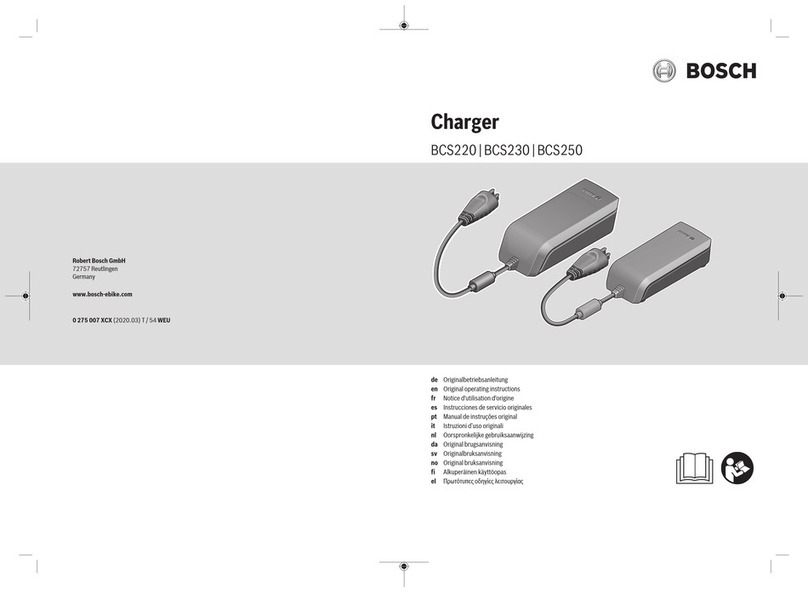
Bosch
Bosch Standart Charger BCS220 Original operating instructions
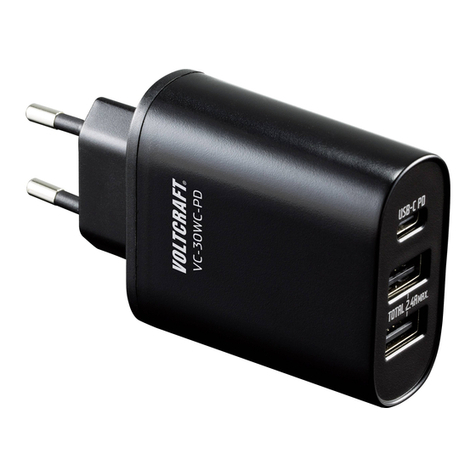
VOLTCRAFT
VOLTCRAFT VC-30WC-PD operating instructions
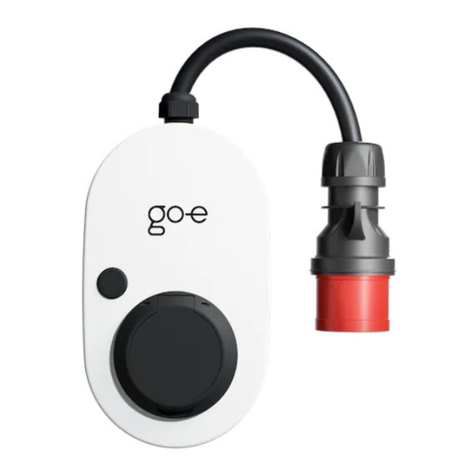
go-e
go-e Gemini flex Quick reference guide
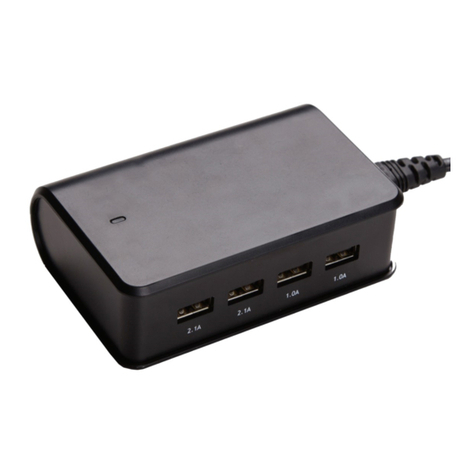
Ednet
Ednet 31806 Quick installation guide
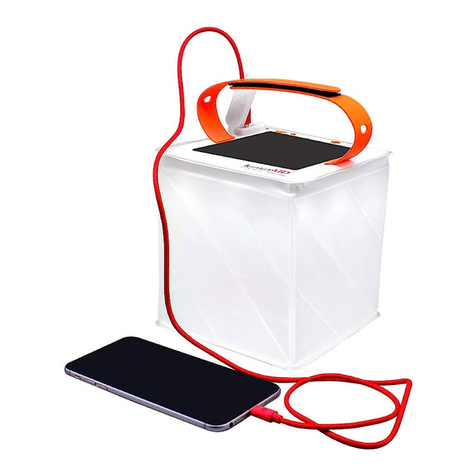
LuminAID
LuminAID PackLite Titan quick start guide

MidNite Solar
MidNite Solar Classic 200 owner's manual



